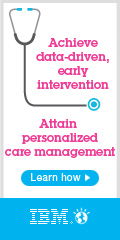Data Analytics and Stratification: Improving Outcomes Across the Care Continuum
 Print this Article | Send to Colleague Print this Article | Send to Colleague
 Pat Stricker, RN, MEd Pat Stricker, RN, MEd
Senior Vice President
TCS Healthcare Technologies
Case management interventions for targeted populations have improved tremendously over the past decade. A variety of innovations have allowed case managers to provide better consistency and standardization, improve clinical outcomes, and increase productivity. One area that has made significant strides in recent years is leveraging data to help drive and support the management of chronically ill populations.
Data analysis refers to the process of transforming data into useful information that can then be used to draw conclusions and support decisions. Data stratification involves dividing members of a population into subgroups to make it easier to find patterns. By stratifying the data into an actionable form, case managers can dynamically manage populations with selected co-morbidities and track their progress over time based on key health metrics.
Emerging information technology (IT) solutions are taking this to an even higher level by automating the selection, and in some cases even the action, then tracking and reporting the process. For example, the ability to automatically schedule and stratify data on a routine basis and automate actions without lifting a finger is something we only dreamt about years ago. Doing this manually used to take hours. Today, real-time information about the patients or populations that we support can be easily retrieved if you have access to integrated IT systems, including case management software and a data warehouse that includes claims data and health risk assessment information.
Information that is captured during the intake process can be used to run statistical reports that provide case managers with easy-to-analyze insights and benchmarks. Although not every aspect of data analysis is automated and simplified, these tools do make the role of the case manager significantly easier when it comes to analysis and metrics.
Mining large data sets from a variety of sources, such as spreadsheets, databases, care reports and logs, health risk assessments, lab results, medications, and claims, can help identify and stratify trends at the patient or group level. Typically, analysts use "intuitive" or "tested" search parameters to query the data to determine patterns that help identify the best candidates for a care or prevention program, those who are non-compliant with medications or HEDIS measures, have multiple risk factors, frequent hospitalizations, etc.
The ability to stratify populations allows case managers to:
- Identify individuals for specific types of programs
- Establish processes to track clinical and financial outcomes
- Identify and study various groups of patients via co-morbidities
- Track populations by disease states and costs1
The 2012 Health IT Survey2 indicates case managers have only just begun to leverage the power of high-end data analytic tools. The 642 survey respondents identified the following trends regarding the ability of their case management software systems to stratify, track, and manage data:
30% Stratifies health care information to promote population-based screening and/or identify
potential candidates for case or disease management;
41% Allows all "input" or "data" fields to generate online or written reports so that you can
track an array of clinical and financial benchmarks
24% Automatically assigns, schedules or executes follow-up tasks (e.g., such as sending out
a letter and/or scheduling a phone call on a "to do" list) based upon stratification results
12% Predicts future medical costs related to an individual or a selected population
15% Allows return on investment (ROI) calculations
30% Promotes the tracking and reporting of clinical outcomes
14% Are linked to a predictive modeling application
22% Are linked to a data warehouse
33% Are linked to claims payment data
As you can see, the majority of organizations still don’t the ability to automatically identify, track, and manage data, but it is encouraging to see that the data is trending towards increases in this area each year.
Data content and the quality of the data are an integral part of the interconnected health care system of the future. Many factors come into play when thinking about moving the ideal process for transitioning a patient from one care setting to another. Incorporating data analytics into the care continuum allows health providers to offer a safer and more comprehensive system to treat patients, keep accurate records, improve outcomes, and educate patients and caregivers about their health.
1See Society of Actuaries 2007 Report entitled "A Comparative Analysis of Claims-Based Tools for Health Risk Assessment" at http://www.soa.org/files/pdf/risk-assessmentc.pdf.
2A survey co-sponsored by the Case Management Society of America (CMSA), TCS Healthcare Technologies (TCS) and the American Board of Quality Assurance Utilization Review Physicians (ABQAURP). The full 2012 Health IT Survey will be released later this year.
To contact Pat Stricker:
Email her at pstricker@tcshealthcare.com or reach her at (530) 886-1700 ext. 215.    
|
Follow us on:



|

 Pat Stricker, RN, MEd
Pat Stricker, RN, MEd




